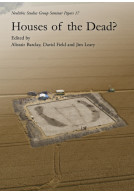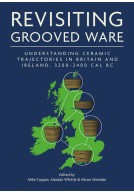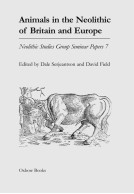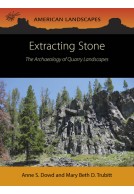Round Mounds and Monumentality in the British Neolithic and Beyond (Paperback)
Imprint: Oxbow Books
Series: Neolithic Studies Group Seminar Papers
Pages: 256
Illustrations: 101 b/w illus, 13 colour illus, 5 tables
ISBN: 9781842174043
Published: 10th July 2010
Script Academic & Professional
Series: Neolithic Studies Group Seminar Papers
Pages: 256
Illustrations: 101 b/w illus, 13 colour illus, 5 tables
ISBN: 9781842174043
Published: 10th July 2010
Script Academic & Professional
This book will be reprinted and your order will be released in due course.
You'll be £36.00 closer to your next £10.00 credit when you purchase Round Mounds and Monumentality in the British Neolithic and Beyond. What's this?
+£4.99 UK Delivery or free UK delivery if order is over £40
(click here for international delivery rates)
Need a currency converter? Check XE.com for live rates
(click here for international delivery rates)
Need a currency converter? Check XE.com for live rates
This volume, the tenth published collection of seminar papers from the Neolithic Studies Group, is based upon a conference that took place at the British Museum in November 2008. The meeting aimed to consider the chronology and development of Neolithic round mounds; their changing form and use; their relationships to contemporary cultural, ancestral and natural landscapes; the extent to which they provide scope for identifying local and regional social organization; and, not least, why they were round. Following the conference, further papers were offered for this edited volume, widening and broadening the initial discussion. The papers are arranged in rough geographic order starting in the north and working southwards before heading across the Irish Sea and then the Atlantic. Following a wide-ranging discussion of round mounds across the world, two papers discuss aspects of Scottish round mounds, before moving down to the Isle of Man, the Neolithic round mounds of the Yorkshire Wolds, Liffs Low in the Derbyshire Peak District, and round mounds on the Cotswolds. The volume then moves to Wessex, starting with a discussion of Silbury Hill, and followed by a re-evaluation of the Great Barrow at Knowlton, Conquer Barrow at Mount Pleasant, and the Hatfield Barrow at Marden. How archaeologists and heritage managers choose to interpret round mounds is the subject of the next paper, using Silbury Hill as the primary case study. This is followed by a broad discussion of circular traditions, particularly formative henges, in Wales and adjacent counties, round burial mounds in the Boyne Valley, Ireland, such as Knowth, Dowth and Newgrange, and Irish round mounds containing portal tombs. By way of comparison with the evidence from the British Isles, the volume then crosses over to North America for a broad discussion of mound-building traditions there. Rounding off the volume is another wide-ranging essay on the nature of round mounds, which challenges our very understanding and interpretation of them.
Other titles in the series...
Other titles in Oxbow Books...





















